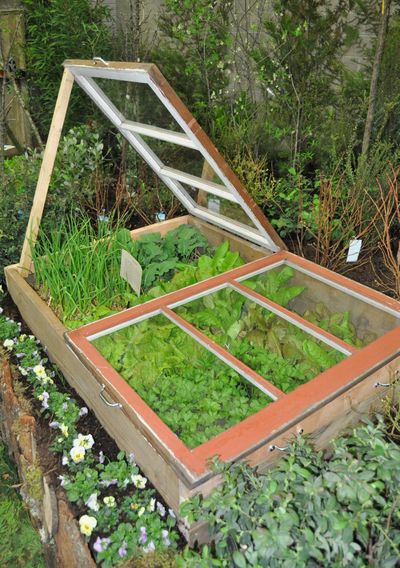Gardening: Cold frame helps plants start early, stay late

Believe it or not, last weekend in Portland I saw blooming shrubs – outdoors. On top of it, I had to peel off my Inland Northwest winter travel clothes in the face of 58-degree temperatures.
Spring is coming, but because the weather has been so whacky this winter, I think we better plan for the worst and get our season extension systems set up.
A cold frame is a simple way to get a jump on the growing season. It can be used in the spring to harden off seedlings and store our early nursery purchases until it is warm enough to set them out. It can also be used to start an early crop of salad greens, spinach or radishes. In the fall, it can protect late plantings of these crops well into November or even later.
A cold frame is simply a four-sided box with a transparent lid that captures light from the sun and traps heat to protect plants from the spring frosts. The sides of the box can be made from plywood, concrete blocks or bales of hay. Don’t use oriented strand plywood because it is not weatherproof. The transparent top can be made from salvaged window sashes, fiberglass or Plexiglas panels set in a frame, or plastic sheeting stapled to a frame.
If building it yourself isn’t your thing, there are a number of commercial alternatives available from garden centers and catalogs. Many of these are very portable so you can move them around as needed and fold them up for storage when you aren’t using them.
The size of the recycled window or frame will determine the size of the box. An ideal size is 2 to 4 feet wide by 3 to 6 feet long. This size allows you to reach to the back of the bed without stepping into it. The back should be 6 to 8 inches higher than the front to catch all the sunlight possible. Place the cold frame with the slant facing south in a protected place out of the wind. Be sure it isn’t in a low spot where water can collect and seal the bottom edge to seal out drafts.
The trickiest part of using a cold frame is managing the internal temperature during the day. With the lid down, the temperature can rise quickly on a sunny day and actually cook the plants. Ideally the temperature inside the box should stay below 75 degrees for summer crops and below 60 for cool season plants. The rule of thumb is to prop open the lid of the box 6 inches once daytime temperatures reach 40 degrees and open it completely if temperatures are above 50 degrees. Close the lid in the late afternoon to trap the heat for the night. If night temperatures are predicted into the low 20s, cover the lid with straw, insulation board, cardboard or a tarp to add insulation. Remember to remove it in the morning.